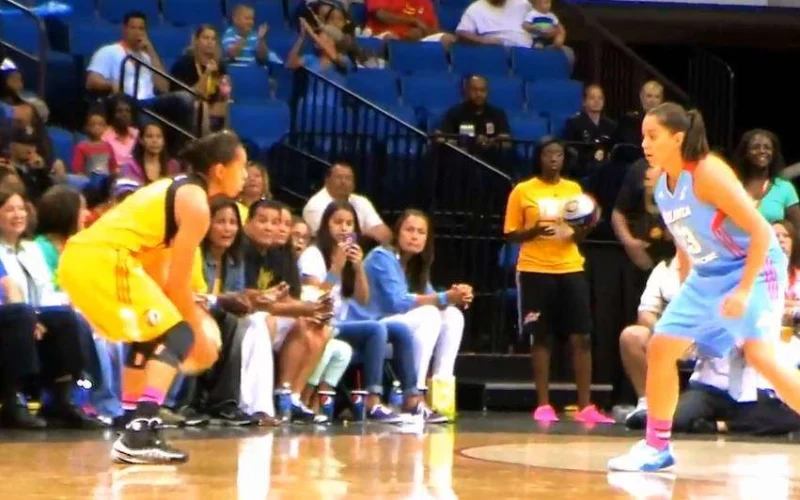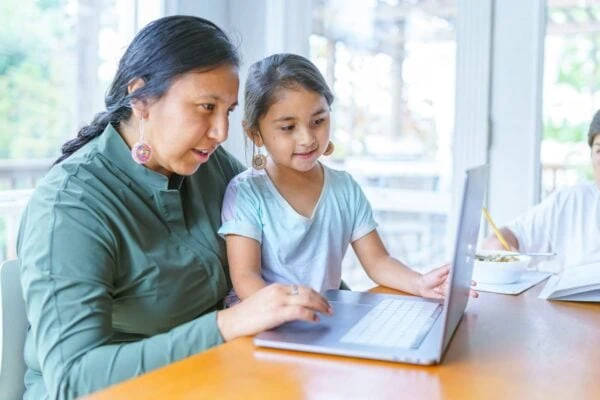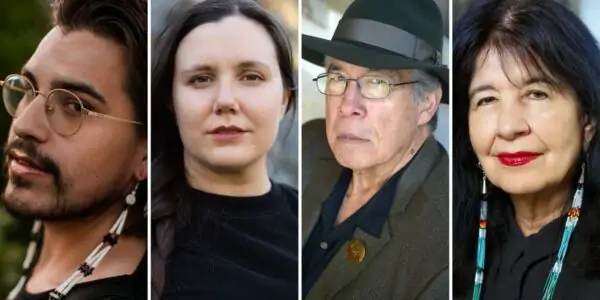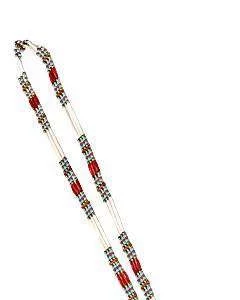Nowadays, you don't have to scroll too far to find a host of grim news and statistics surrounding Native Americans. But while much of the media fixates on the negative headlines plaguing Indian Country, it's important to remember that there's a lot of good happening, too.
To help balance out your newsfeed, we've compiled a list of 10 things that tell a different story about indigenous people. The following headlines exemplify the hope, strength, compassion, creativity, resilience, and good nature on display in Native communities across the country.
Read on to learn about some inspiring Native stories and initiatives making a difference in our communities.
1. Future Indigenous People’s Day celebration ideas
This is the second official year of Indigenous Peoples' Day as a national holiday. President Biden posted the annual “Proclamation on Indigenous People’s Day, 2022,” on the White House website on Oct. 10. He writes, “On Indigenous Peoples’ Day, we honor the sovereignty, resilience, and immense contributions that Native Americans have made to the world; and we recommit to upholding our solemn trust and treaty responsibilities to Tribal Nations, strengthening our Nation-to-Nation ties.”
Individuals around the nation celebrated with love, honor, and respect. An article from the Smithsonian offered five excellent ideas for celebrating and appreciating the holiday. While we have passed the date this year, here are some ideas for next year: acknowledge the Indigenous lands you are on; paddle the waters; walk the land; plant Native; check out Indigenous books and entertainment; stargaze.
2. High-speed, affordable internet could be coming to more Native Americans.
One thing that most people can agree on is that living without high-speed internet access is extremely difficult in today's world. Thankfully, that may be changing soon. At the moment, According to a survey by the Census Bureau, fixed broadband services reached 95.6% of the nation as a whole but just 67% of Native American communities. What is being done about this discrepancy? The Tribal Broadband Connectivity Program is a $980 million program that is all about digital inclusion and will award grant money to various areas in need. So far, the initiative has 43 projects going. This will make it easier than ever to connect with the outside world.
3. Native American voter engagement is up.
Most people wouldn't think of skateboarding as a way to engage Native American, Black, and Latinx communities, especially young people, in the political process, but that's precisely what “Skate to the Polls” is all about. The project’s leaders, Protect the Sacred and NDN Collective, recently encouraged Native individuals to get involved in local and national politics and fight back against voter suppression. The event recently took place in Kayenta, Arizona surrounding the Navajo Nation. According to Indian Country Today, “Dozens of young people skated, in solidarity, to Kayenta Recreation Park where voting experts were onsite giving community members voter information for the state and respective counties.”
Who would have thought that skating could make such a difference?
Check out their hashtag: #NativeVote22
4. New Supreme Court case on Indian Child Welfare Act.
The Supreme Court will hear a case on November 9, Haaland v Brackeen, which is challenging the constitutionality of the Indian Child Welfare Act. The act, passed in 1978, is designed to keep Native American children with their families and tribes whenever possible. Some state governments argue that the act infringes on their rights, but advocates say it's essential for preserving Native culture and preventing child abuse. Angelique EagleWoman, director of the Native American Law and Sovereignty Institute at the Mitchell Hamline School of Law, states in an interview, “It is very difficult to conceive of the US supreme court reframing the entire relationship with tribal governments and tribal children. We are starting to heal our communities, and it would be a major setback to genocidal policies for the US supreme court to strike down any of the provisions in the Indian Child Welfare Act.” Whatever the case’s outcome, it will be a crucial decision for Native Americans.
5. Upcoming free online event: Native Cinema Showcase.
The National Museum of the American Indian celebrates with anyone who wants to join in the fun. Throughout November, National Native American Heritage Month, the museum offers a calendar of primarily in-person and two online events that anyone can participate in. One attractive online option is coming up from November 18 to 25: the Native Cinema Showcase. “The Native Cinema Showcase is a weeklong celebration of the best in Indigenous film. This year’s online program includes a total of 35 films representing 30 Native nations in eight different countries. Genres include documentaries, music videos, kid-friendly shorts, films in Indigenous languages, and more.” Interested? Here is the link to the free event!
6. Sioux tribes regain items taken by museums in the past.
When people do the wrong thing in the past, there is still a way to reconcile it in the future. A small Massachusetts museum announced that it is returning around 150 sacred items to the Lakota Sioux tribes. These items were taken from the tribes in the 1800s and have been in the museum's collection for years. News sources say that “museum officials have said that as a private institution that does not receive federal funding, the institution is not subject to NAGPRA, but returning items in its collection that belong to Indigenous tribes is the right thing to do.” Almost 900,000 Native American items remain held by the nation’s museums, universities, and government agencies. But this is a start.
7. STEM organizations that support Native students.
There is a growing number of organizations that support Indigenous students who are interested in STEM careers. Realistically, there is a lack of young Native people who attend STEM events and take extra STEM classes. Natives, among other minorities, are highly underrepresented in STEM programs and careers, possibly due to the lack of inclusion in such programs and jobs and the lack of knowledge faculty has on supporting Native people in this field. Ultimately, we need more Indigenous people in these positions to help solve some of the world's biggest challenges. If you're looking for a career in science, technology, engineering, or math, check out one or more of these organizations: The American Indian Science and Engineering Society (AISES); Native American Science and Engineering Program (NASEP); American Indian Services (AIS) PREP; Indigenous Research and STEM Education (IRSE).
8. Native authors and artists are killing it.
You'll enjoy this one about two award-winning Native Americans. Both are creative individuals who have achieved great success in their respective fields. First is a Diné artist Armond Antonio of Gallup, New Mexico, who won multiple prizes for his realistic portraits at the Gallup Intertribal Ceremonial. Second is a Diné author whose novels have captivated readers nationwide. Ramona Emerson’s thrilling novel “Shutter” recently debuted and is getting fantastic reviews. She uses her experience as a forensic photographer and life on the res to paint an enthralling picture.
Follow them to see what they’ll do next!
9. More Native Americans are embracing their agricultural roots.
Many Native American tribes across the United States are reclaiming their agricultural roots like never before. They're growing healthy foods, taking classes on farming and striving for self-sufficiency.
At the center of the movement is Braiding the Sacred, a growing network of indigenous corn growers from the four directions. They are working to preserve the traditional varieties of sacred corn by connecting leaders in agriculture around the role corn plays in the health of indigenous communities. Learn more in this article from the New York Times.
10. Number of Indigenous people running for office grows
Since 2018, when we elected Deb Haaland and Sharice Davids for Congress and Peggy Flanagan as Lt. Governer, more and more Native individuals seem interested in joining the political stage. Fast forward to 2020, and more than 100 Indigenous candidates represented the ballots. As the U.S. midterm elections approach, “143 candidates filed to run for city, county, state and national office during the primary election,” according to Indian Country Today’s running database. This is excellent news for everyone because having a voice in government makes a real difference in Native communities.
Conclusion
It’s always inspiring to read about the good things happening in our world, especially when those events are catalyzed by movers and shakers in the Native American community. Hopefully, one of today’s stories about the incredible work being done by Native Americans across the country has made you smile.
We have a lot to be proud of, and we can continue making progress by standing together and supporting one another.
Last Updated on November 10, 2022 by Paul G






